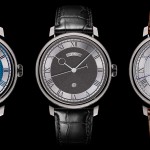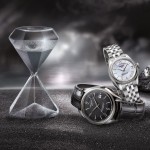SpaceOne Introduces an Affordable Tellurium
A simplified astronomical complication made accessible.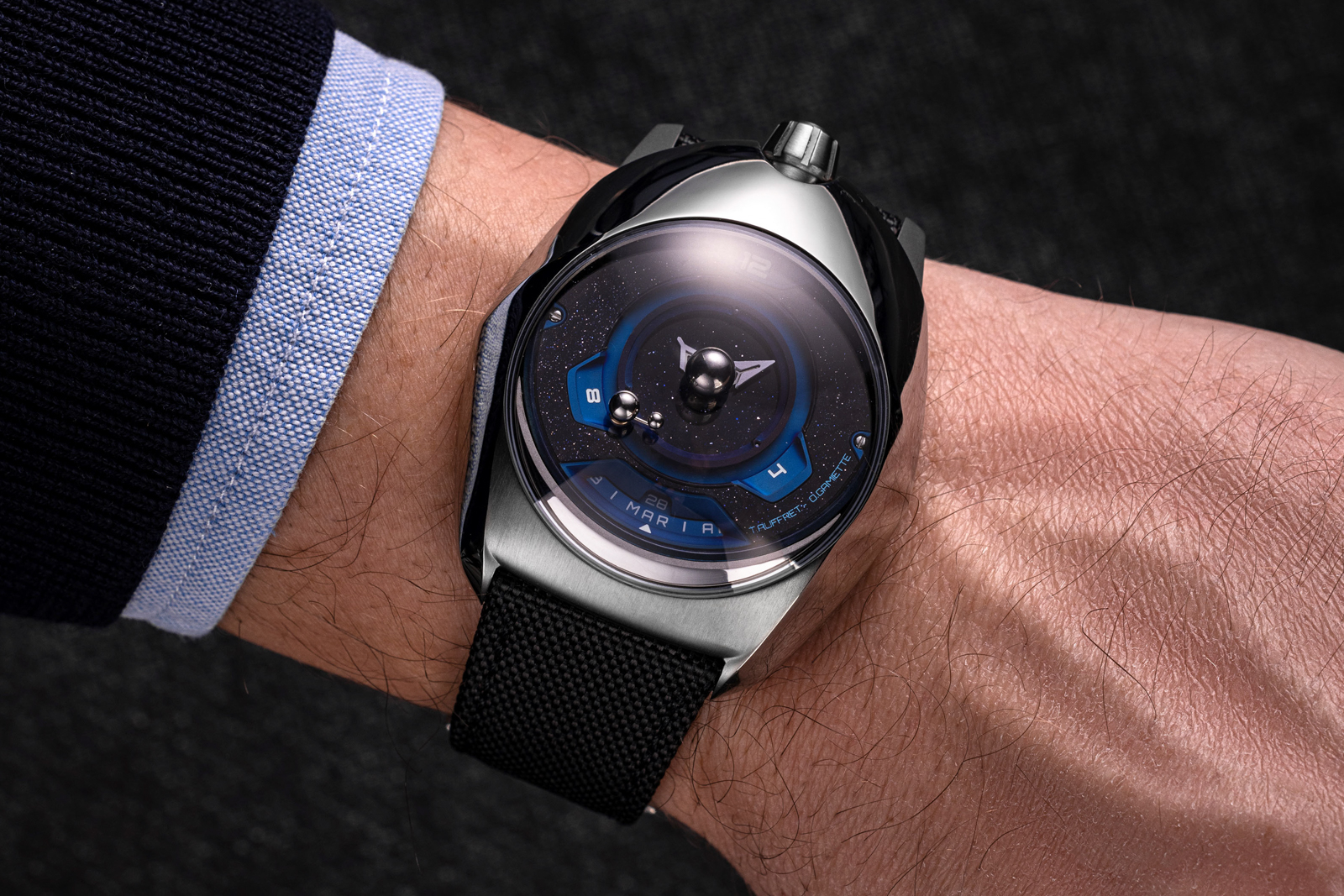
Founded last year by a pair of Frenchmen, entrepreneur Guillaume Laidet and independent watchmaker Theo Auffret, SpaceOne fashions itself as a maker of modular complications assembled in Paris that are make accessible thanks to Swiss movements and external components sourced elsewhere. Its second creation, the Tellurium, is an affordable – but heavily simplified – heliocentric tellurium watch priced at just €2,999, or about US$3,250.
Initial thoughts
A tellurium is a kind of orrery, a mechanical model of the solar system, which shows the planets’ positions relative to the Sun. Traditional orrery are kinetic sculptures driven by complex gearings and usually large format, desk clock size or larger. The Richard Mille Planetarium-Tellurium of 2007, for instance, was the size of a small table.
There have been wristwatch-size versions of orrery, most famously Ulysse Nardin’s pair of the Tellurium Johannes Kepler and Planetarium Copernicus, which were faithful miniaturisation of orreries and conceived with scientific accuracy in mind but were priced accordingly.
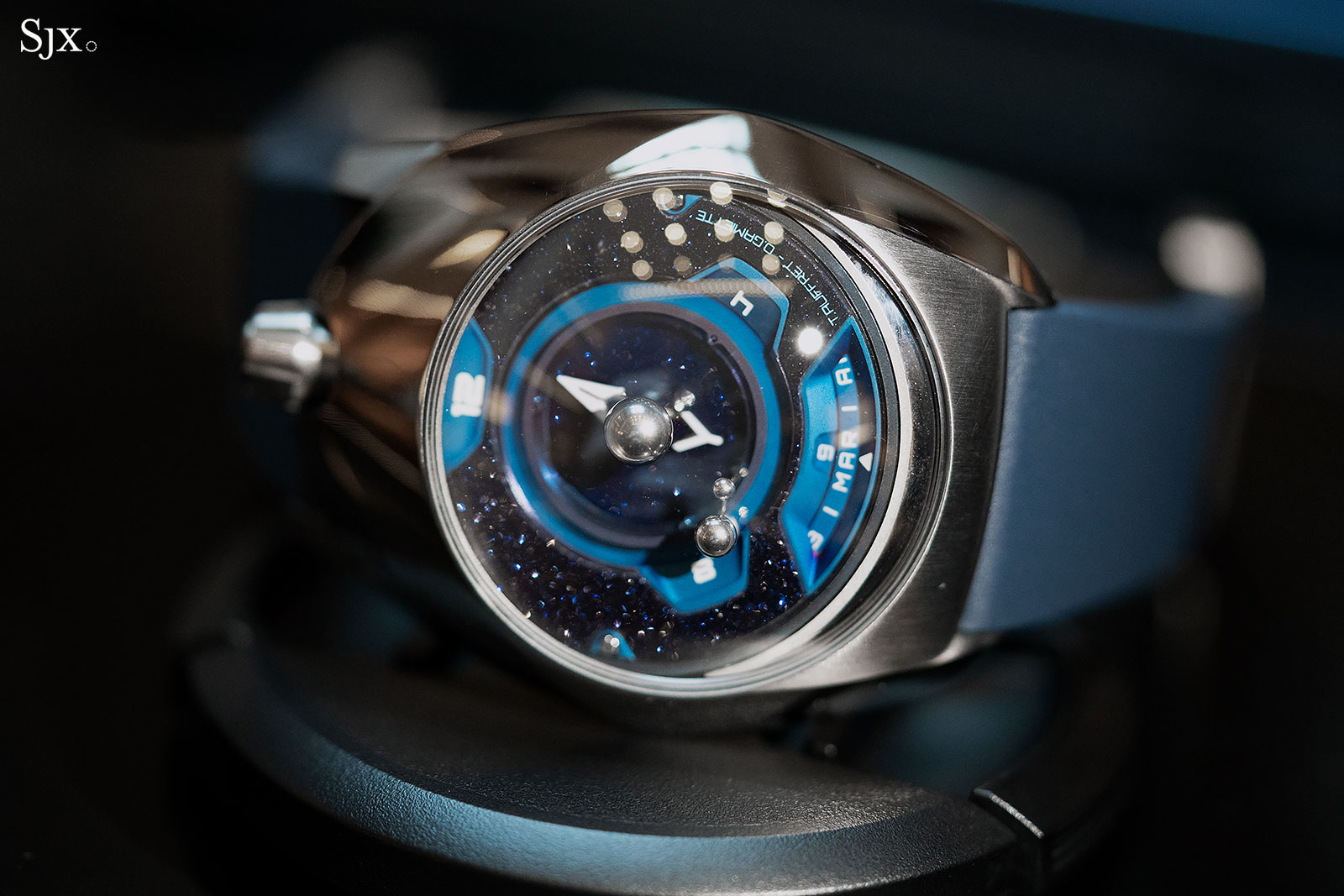
The SpaceOne Tellurium is a heavily diluted of the same. It shows only the Sun, Earth and Moon, each with minimal motion. The Earth, for instance, does not rotate on its own axis. Rather than being a miniaturised true orrery, this is an heavily simplified representation presented with sci-fi style.
This simplified approach brings with it the inconvenience of a non quickset calendar. So setting the calendar from one end of the year to the other requires hundreds of rotations of the crown.
Design wise, the Tellurium is striking but familiar, appearing to be made up of bits inspired by other pricier watches. The titanium case resembles a spaceship and brings to mind the MB&F HM10 “Bulldog” and some Urwerk models. The aventurine dial, on the other hand, evokes the Vianney Halter Deep Space Tourbillon.
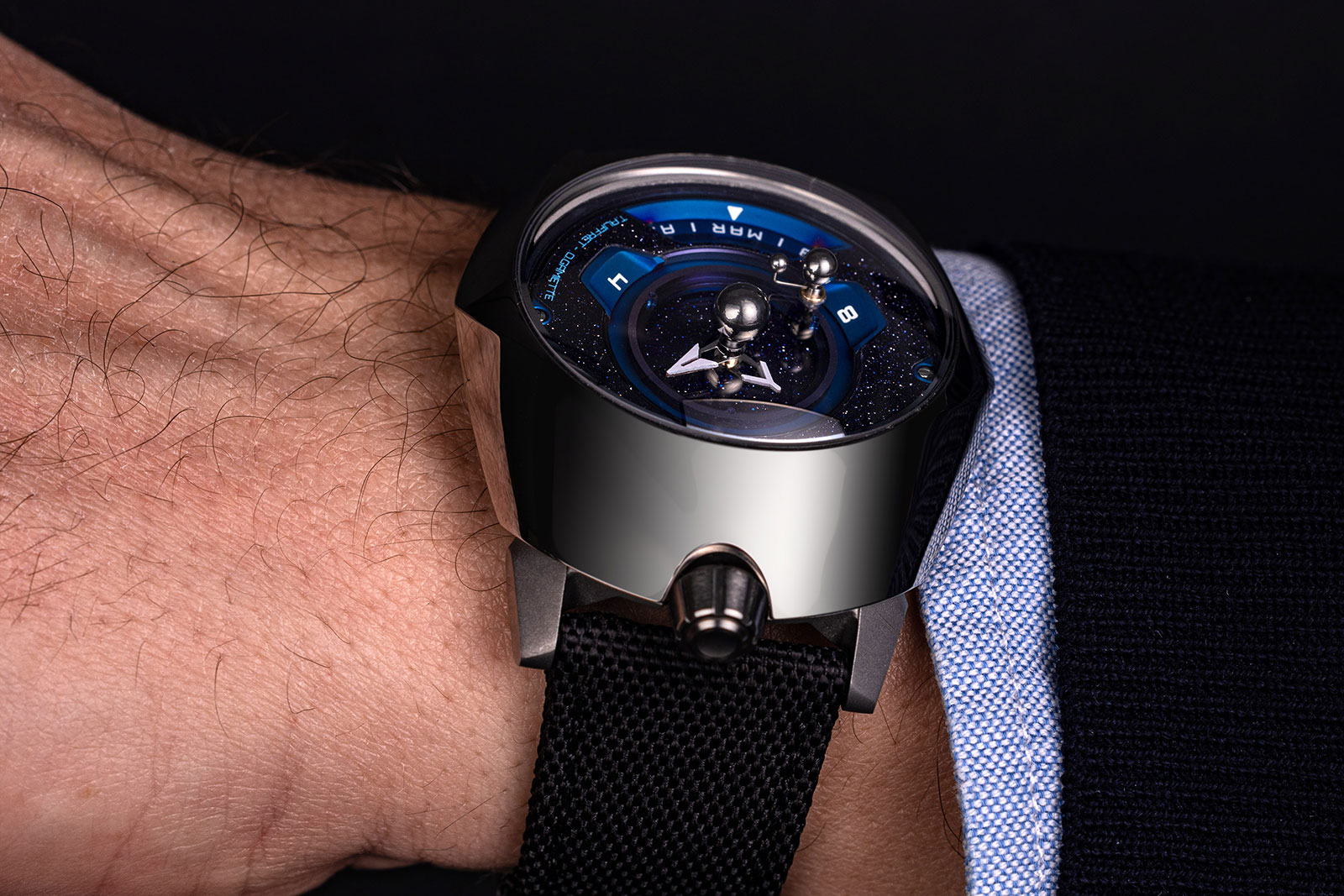
The electric blue palette, angular typography, and De Bethune-esque hands all suit the sci-fi theme. The dial has a layered appearance, with the planets, date, and hands on different levels, all under a domed sapphire crystal, but it looks segmented, feeling like a combination of parts rather than a whole.
Nevertheless, the SpaceOne Tellurium is a noteworthy proposition, considering the price. The fit and finish is good for a watch in this price range. Leaving aside the less-than-perfect orrery, the Tellurium has an original and exotic complication in this price segment, one usually found in much more expensive timepieces. As a buyer in this price segment, the decision is between an accessible, but compromised, complication like this, or a simpler, but more sophisticated timepiece.
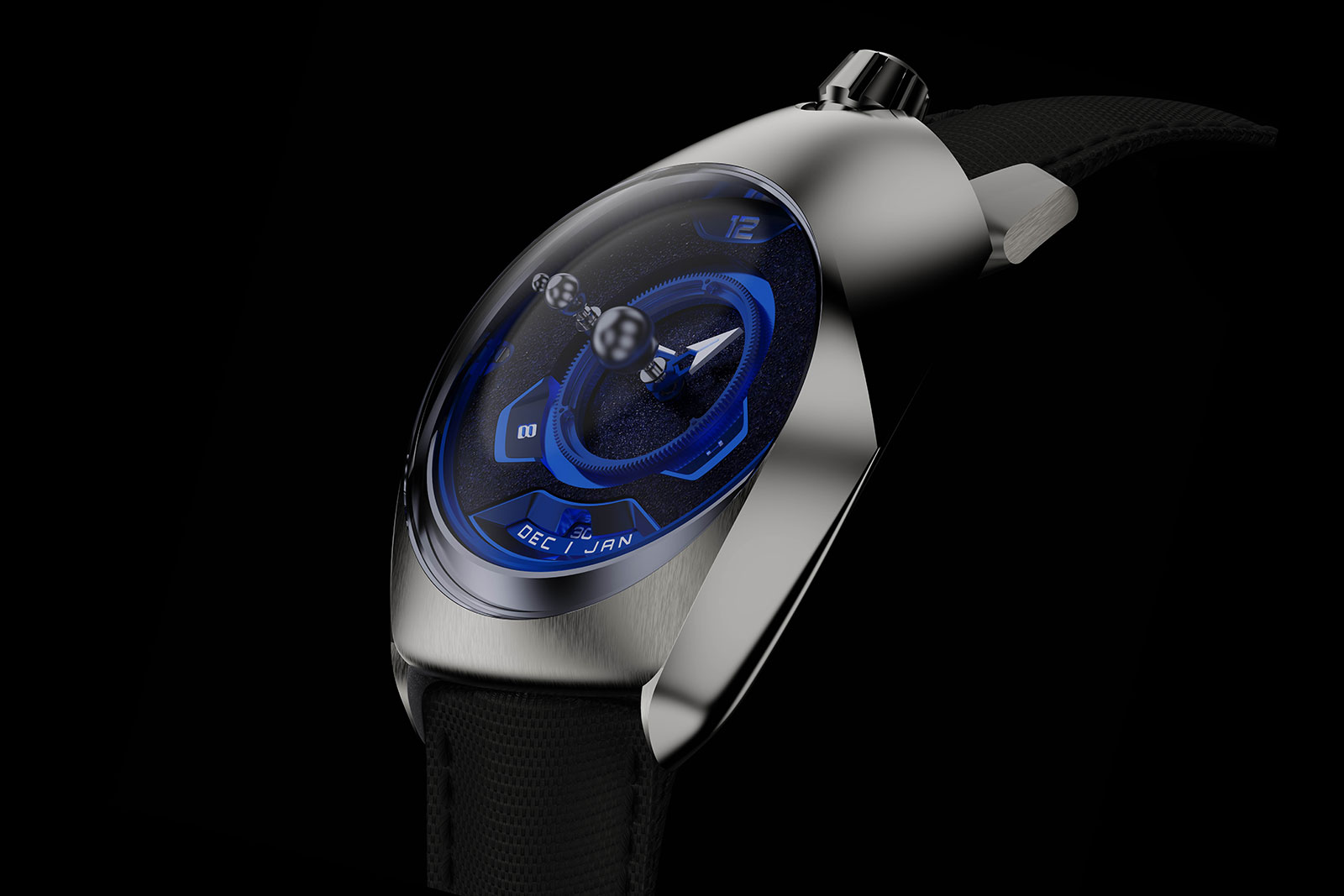
An interesting complication
SpaceOne’s creation performs some of the basic tellurium functions, depicting the Earth orbiting around the centrally-mounted Sun in 365 days while the Moon circles the Earth once every 29.5 days. In keeping with the sci-fi aesthetic, the celestial bodies are not miniatures but rather polished titanium spheres that seem to float over the dial.
The illusion of the floating planets is evokes mystery clocks of old, particularly those invented by Maurice Couet for Cartier, where the hands were fixed to sapphire gears, creating the impression of them floating in midair. It’s a fitting tribute, given Mr Auffret’s French watchmaking heritage.
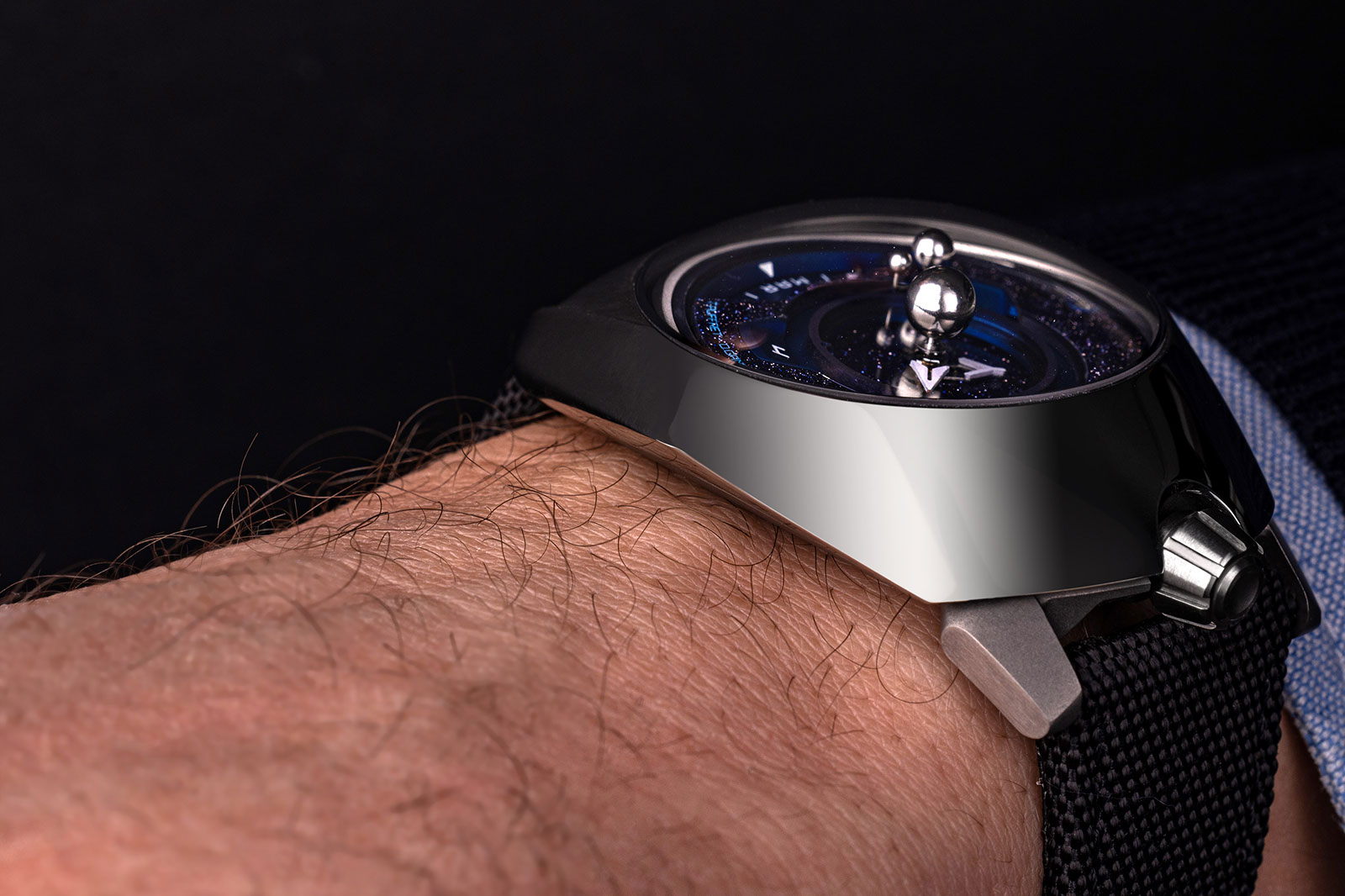
The complication is conceptually simple, and also executed simply, thanks to a clever construction which is not immediately apparent.
The Sun sphere sits on the same axis as the hands, but it is elevated upwards towards the domed sapphire crystal. On that same arbour, between Sun sphere and handset, pivots a large, clear sapphire disc that extends beyond the edge of the time display sub-dial in the centre. Being transparent, the sapphire disc is almost invisible, but it functions as the platform for the Earth and Moon assembly, which are also connected to a pinion.
As the sapphire disc rotates it carries the Earth and Moon mobile around a large, blue fixed gear surrounds the time display sub-dial. Because of the pinion underneath the Earth sphere that meshes with the fixed gear, the Moon orbits around the Earth as the sapphire disc rotates. The Earth’s rotation around its own axis is not modelled on the Tellurium; such an implementation would have required additional layers of gearing that substantially increase the complexity of the display (and the price).
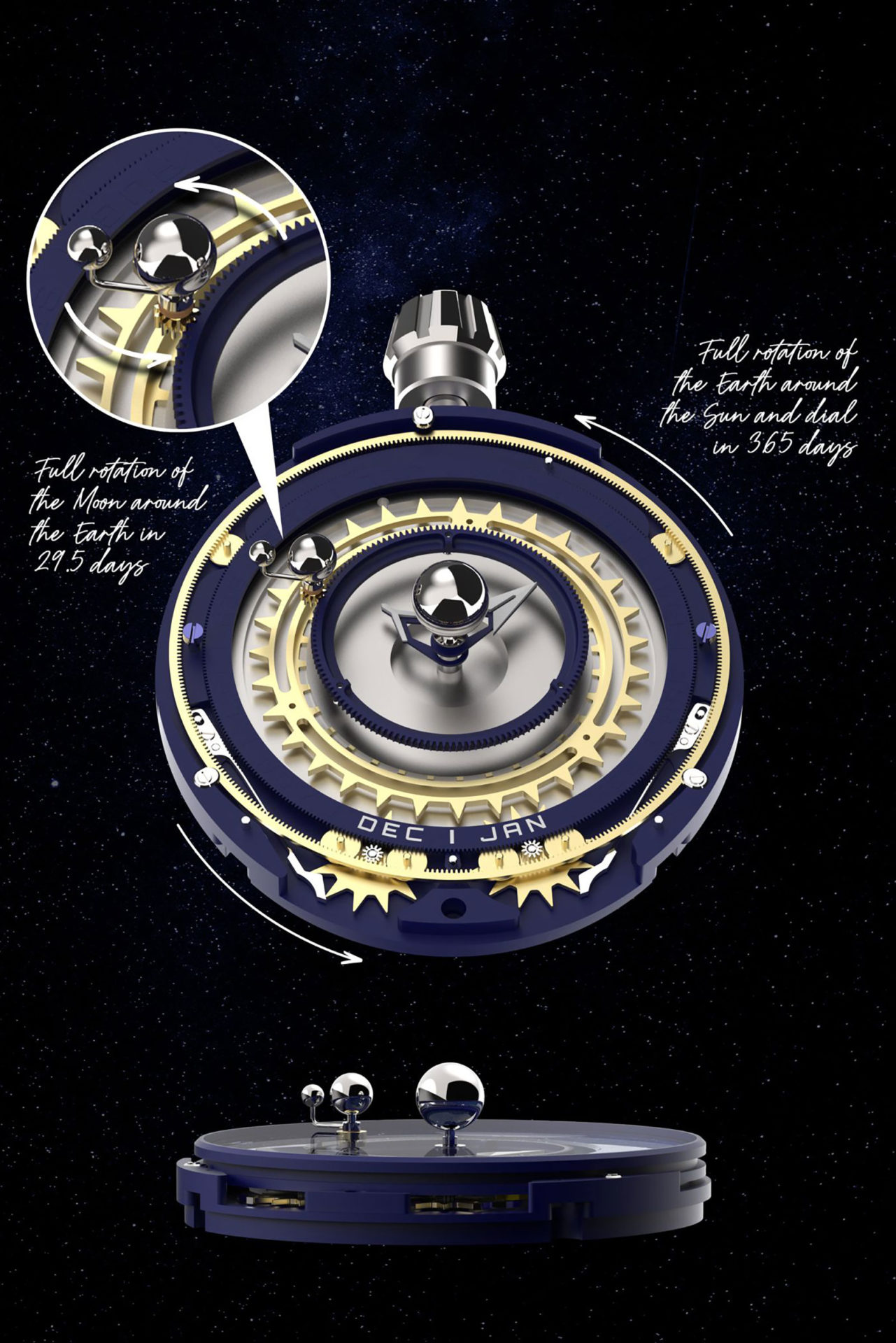
Tthe inside workings of the Tellurium module
An interesting aspect of the Tellurium movement is the interface between the base movement and complication module, which also has a jumping date and sliding month indicator. The module is driven solely through the base movement’s date mechanism, in other words the bit that switches over once a day at midnight.
The module is powered by a central control ring (gold in the figure above) that replaces the base movement’s date disc. The day of the month indicator sits directly on this control ring.
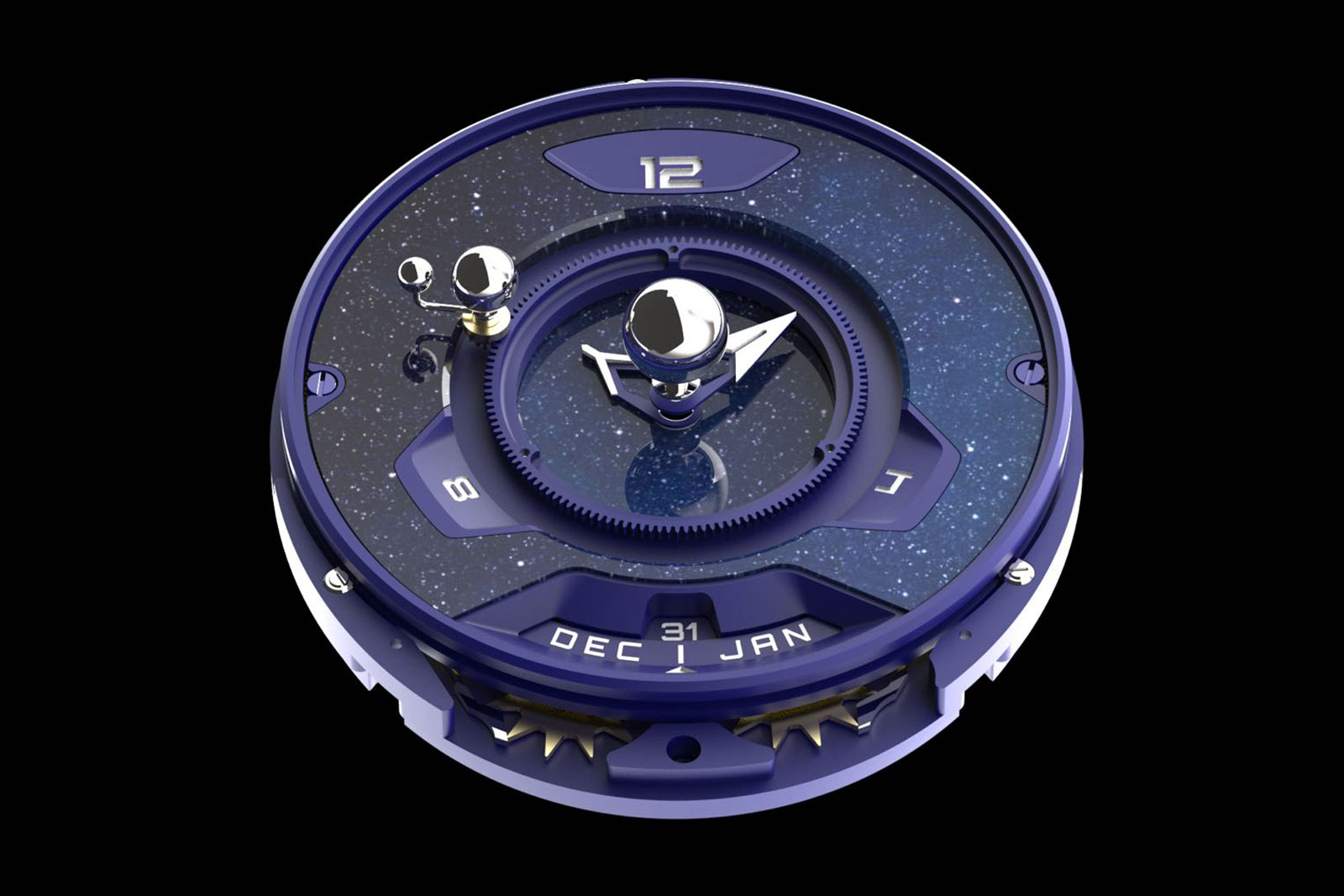
On its outside, the control ring features sharp teeth meant to engage with two smaller star-shaped wheels located at six o’clock. One wheel connects with a pinion to the months disc (blue), driving it slowly. The other star wheel is placed further from the control ring and engages with its pinion a large internal ring gear (gold). On top of this large-diameter gear sits the sapphire disk carrying the Earth and Moon mobile.
The date advances normally by one step every day, in turn making the two star wheels each advance by one step. This causes both the months ring and sapphire disc to move fractionally every day, with the reduction gearing chosen to suit their respective functions.
As the wearer changes the date for months with less than 31 days, the tellurium cycle corrects in sync – so the Earth sphere makes a full turn around the Sun every 365 days (or 366 in the case of a leap year). The rotation rate of the Moon around the Earth is controlled by the planetary gearing – which was computed with an accuracy of at least 100 years.
Because of this set up, there is no quickset function for the calendar, so setting the calendar requires manually advancing the planets via the crown. So to go from January to December requires advancing over 360 steps.
As for the base movement, it is a Swiss-made Soprod P024, a clone of the tried and true ETA 2824. The Soprod P024 is a no-frills movement that runs but does little else. Considering the price and the proprietary module, the basic movement can be overlooked.
While the movement and complication module are Swiss, the habillage, namely components like the case and dial are made in Hong Kong, a necessity given the price. They are, however, executed in relatively high-end materials, namely titanium for the case and aventurine glass for the dial.
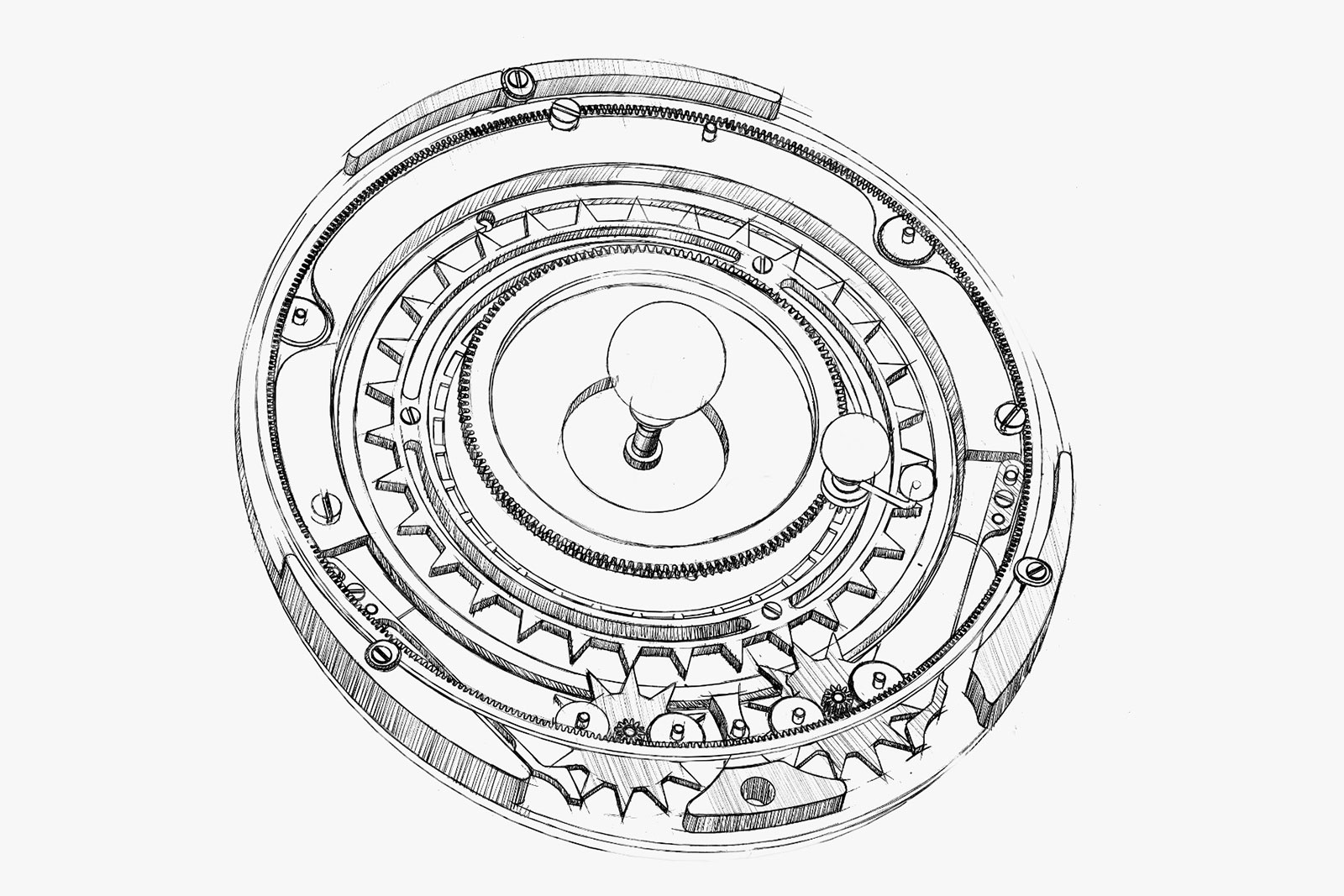
Key facts and price
SpaceOne Tellurium
Dimensions: 50 mm by 42 mm
Height: 16 mm
Material: Grade 5 titanium
Crystal: Sapphire
Water resistance: 30 m
Movement: Soprod P024 H4
Functions: Hours, minutes, position of Earth and Moon relative to the Sun
Frequency: 28,800 beats per hour (4 Hz)
Winding: Automatic
Power reserve: 38 hours
Strap: Fabric strap with titanium buckle
Availability: Direct from SpaceOne
Price: €2,999 including VAT
For more, visit Spaceonewatches.com.
Back to top.

